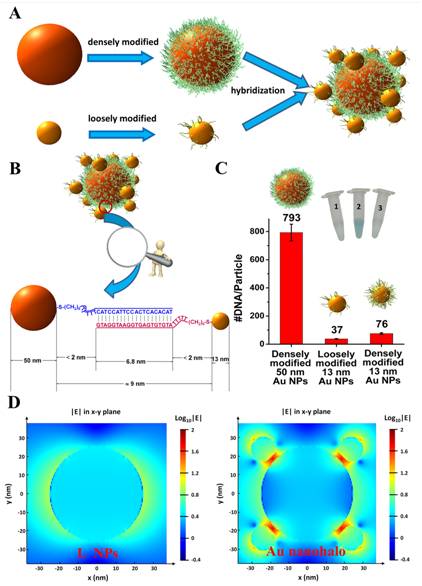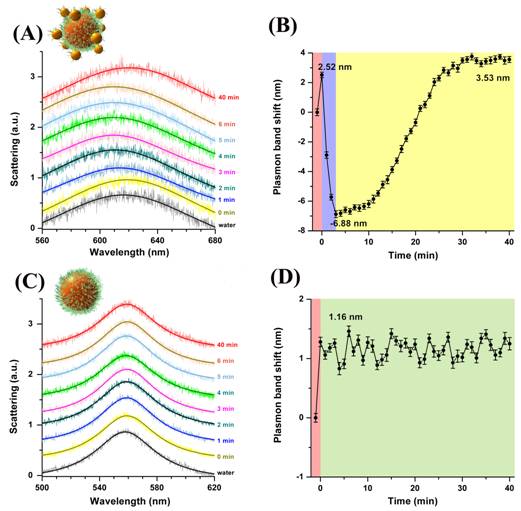Metal Nanoparticles (NPs) are important catalysts for many chemicaltransformations due to their size-induced high surface-to-volumeratio and high chemical potentials. However, owing tothe complexity of heterogeneous reactions, detailed physicochemicalinformation obtained on heterogeneous catalysts isscarce.
Recently, Dr. Kun Li under the guidance of Professor Di Li and Chunhai Fan from Shanghai Instituteof Applied Physics,developed a nanoplasmonic probe for indirect monitoring a catalytic reaction at single-particle level. This work entitled “DNA-Directed Assembly of Gold Nanohalo for Quantitative Plasmonic Imaging of Single-Particle Catalysis” was published in J. Am. Chem. Soc.(J. Am. Chem. Soc.2015, 137,4292).
Plasmonic imaging under a dark-fieldmicroscope (DFM) holds great promise for single-particleanalysis in bioimaging, nanophotonics, and nanocatalysis. They designed a DNA-directed programmableassembly strategy to fabricate a halo-like Au nanostructure(nanohalo) that couples plasmonic large gold nanoparticles(L-AuNPs) with catalytically active small AuNPs(S-AuNPs) in a single nanoarchitecture. Catalytic reactionoccurring on S-AuNPs changes its permittivity, whichresults in a significant variation of the plasmonic resonanceof the nanohalo. Hence, we can indirectly monitor catalyticreactions on a single nanohalo under DFM, on the basis ofwhich they have obtained quantitative information on bothnanocatalysis and catalyst poisoning. This study thus provides a cost-effective means to quantitatively study metal NP-based catalysis at single-particle level.

Figure 1: DNA-mediated assembly of Au nanohalo and the enhanced local electromagnetic field.

Figure 2: LSPR spectra and the corresponding plasmonic band peak shifts of one Au nanohalo during the catalytic reaction.

